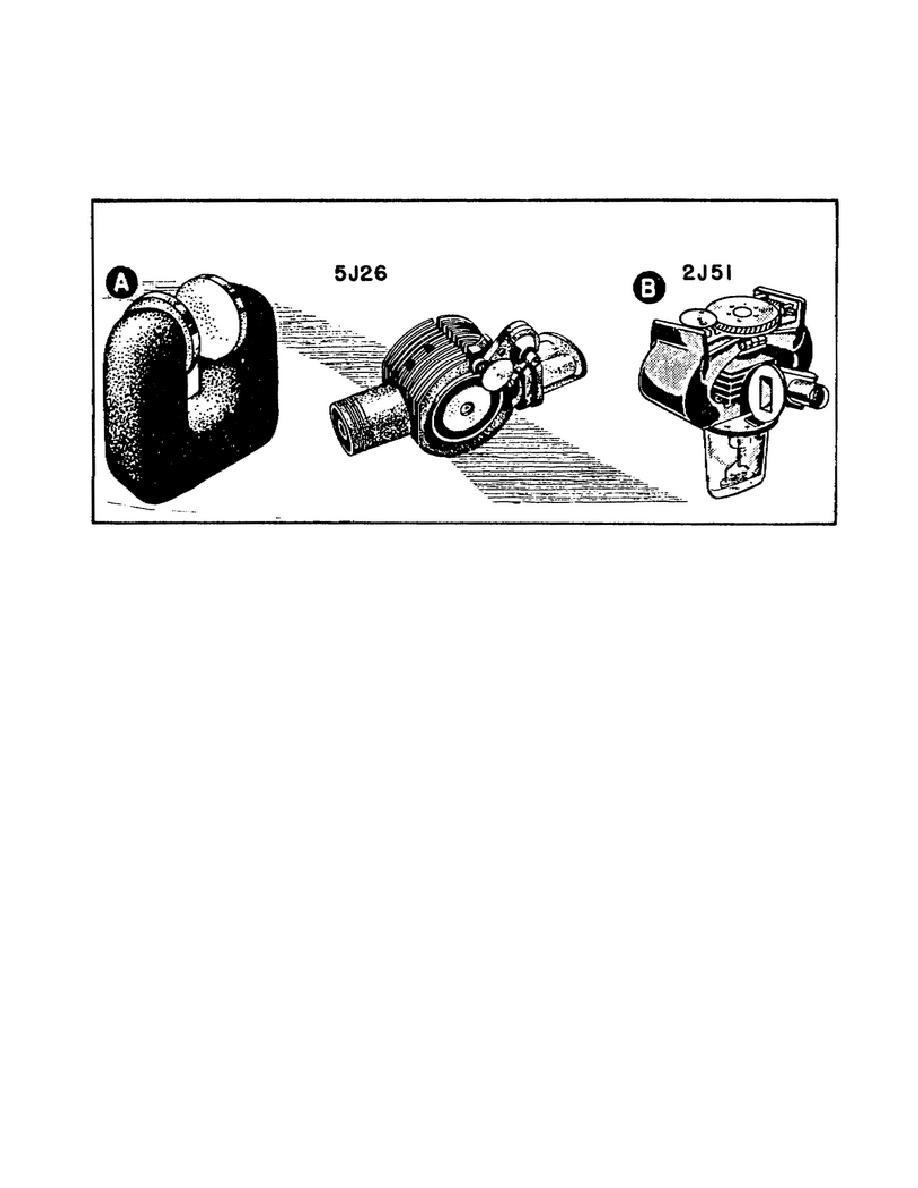
b. The 5J26 magnetron oscillates at frequencies between 1220 and 1350
megahertz. You tune it to the correct frequency using the two gears on the
side of the magnetron.
The gears are coupled to tuning rings inside the
tube. These rings are moved up and down in grooves in the cavity segments
to tune the cavities.
Figure 86.
Outside View of Typical Magnetrons.
c. The RF energy from the 5J26 is coupled out by means of rigid coaxial
line. You can see the coaxial connector on the left side of the magnetron.
Sometimes waveguide is used to couple the energy out of a magnetron instead
of coaxial line.
It all depends on the frequency of the RF carrier.
Waveguide is used when the frequency of the RF carrier is above 3000
megahertz.
d. Notice that the construction around the tube consists of many metal
fins. These are cooling fins that help dissipate the heat generated by the
high-power RF inside the tube.
You will find that most magnetrons have
cooling fins because the peak power generated inside may be anywhere from a
few kilowatts to several megawatts.
e. Finally, look at the glass enclosure on the right-hand side of the
5J26 magnetron.
The glass insulates the long filament leads from the
chassis.
The leads must be long so that they will dissipate the heat
generated by the large current flow through the magnetron when it is
oscillating.
The current flow through a magnetron may be anywhere from a
few amps to more than 100 amps.
124



 Previous Page
Previous Page
